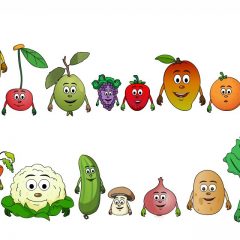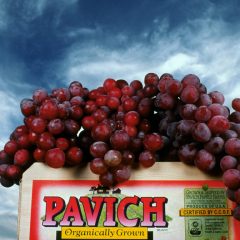By Rachel Benbrook The state of kid’s nutrition is getting some renewed attention in the U.K. in response to a new report released by the UK Soil Association‘s Food for Life program. In particular, the British government’s program that provides free, fresh produce to young children in state funded schools, the School Fruit and Veg Scheme, is […]
Badges of Honor, Smart Metrics, and Quality Food
It is widely accepted that consumer tastes, preferences, and concerns will drive the Future of Food. The companies that find a way to connect with consumers on these issues will gain market share and traction, or so the theory goes. But how will consumers know which foods are tastier and more nutritious? Safer and less […]
Part III: How and Why U.S. Government Policies are Slowing Growth in Organic Demand
It is a badly kept secret in Washington, D.C. that the USDA , and the U.S. government as a whole, does more to slow the growth in organic farming than support it. There are several ways that the USDA, other government agencies, and the Congress bring about this unfortunate outcome. #1 Denial of Consumer Health […]
Part I: A Tipping Point for Organic Apples in the Pacific Northwest?
Part I: A Tipping Point for Organic Apples in the Pacific Northwest? The remarkable growth since 2016 in organic apple production in Washington State has received almost no attention in the media, food industry, and public health communities. I paste in below a recent update from two Washington State University faculty members who follow closely […]
Is the Non-GMO Project Guilty of Spreading Fake News?
The U.S. Farmers and Ranchers Alliance is one of the well-funded, influential organizations seeking to educate the public about all-things-agricultural (albeit, mostly conventional ag). They address food and farming-related economic, trade, federal policy, conservation, food safety, biotech, and research issues. Their CEO, Randy Krotz published an opinion piece July 6, 2017 in AgriPulse, a widely […]
The Devil in the Details
Charles Benbrook, Center for Sustaining Agriculture and Natural Resources, Washington State University Blog Post, September 2012 A comprehensive paper on the nutritional quality and safety of conventional versus organic food was published in the September 4, 2012 issue of the Annals of Internal Medicine (Smith-Spangler et al., Vol. 157, Number 5: pages 349–369). The Stanford University Medical […]
Discussion and Author Response on GM Maize Multiomics Analysis in “Nature: Scientific Reports”
Dr Michael Antoniou and Dr Robin Mesnage respond to “Expert reaction to multiomics analysis of NK603 GM maize as published in Nature: Scientific Reports” from December 2016 – quotes collected by the Science Media Centre See also: This Hot Science item about about the Mesnage et al. paper. http://www.sciencemediacentre.org/expert-reaction-to-multiomics-analysis-of-nk603-gm-maize/ Dr Dan MacLean, Head of Bioinformatics at The […]
Key Nutritional Quality Studies: Meta-Analyses
Introduction 2013-2015 British Journal of Nutrition Meta-Analyses Plant-Based Foods Milk and Dairy Products Meat 2013 PLOS ONE Milk Study 2012 Annals of Internal Medicine analysis by Smith-Spangler et al. 2009 American Journal of Clinical Nutrition study by Dangour et al. The 2008 Organic Center Report See also: Introduction to Nutritional Quality Organic Vs. Conventional Foods Key Nutritional […]
Press Release: New study finds significant differences between organic and non-organic food
EMBARGOED UNTIL: 00:01Hrs Tuesday 15th July 2014 – set by the academic journal British Journal of Nutrition Source Information: “Higher antioxidant concentrations and less cadmium and pesticide residues in organically-grown crops: a systematic literature review and meta-analyses.” Baranski, M. et al. British Journal of Nutrition, July 15th 2015. New study finds significant differences between organic […]
The Dietary Risk Index (DRI)
The Dietary Risk Index, or DRI, is a complex analytical system that quantifies the relative risks stemming from pesticides in food. The DRI value for a given food-pesticide combination takes into account the level of residues in the food, the chronic toxicity of the pesticide, and the typical number of grams in a single serving […]








